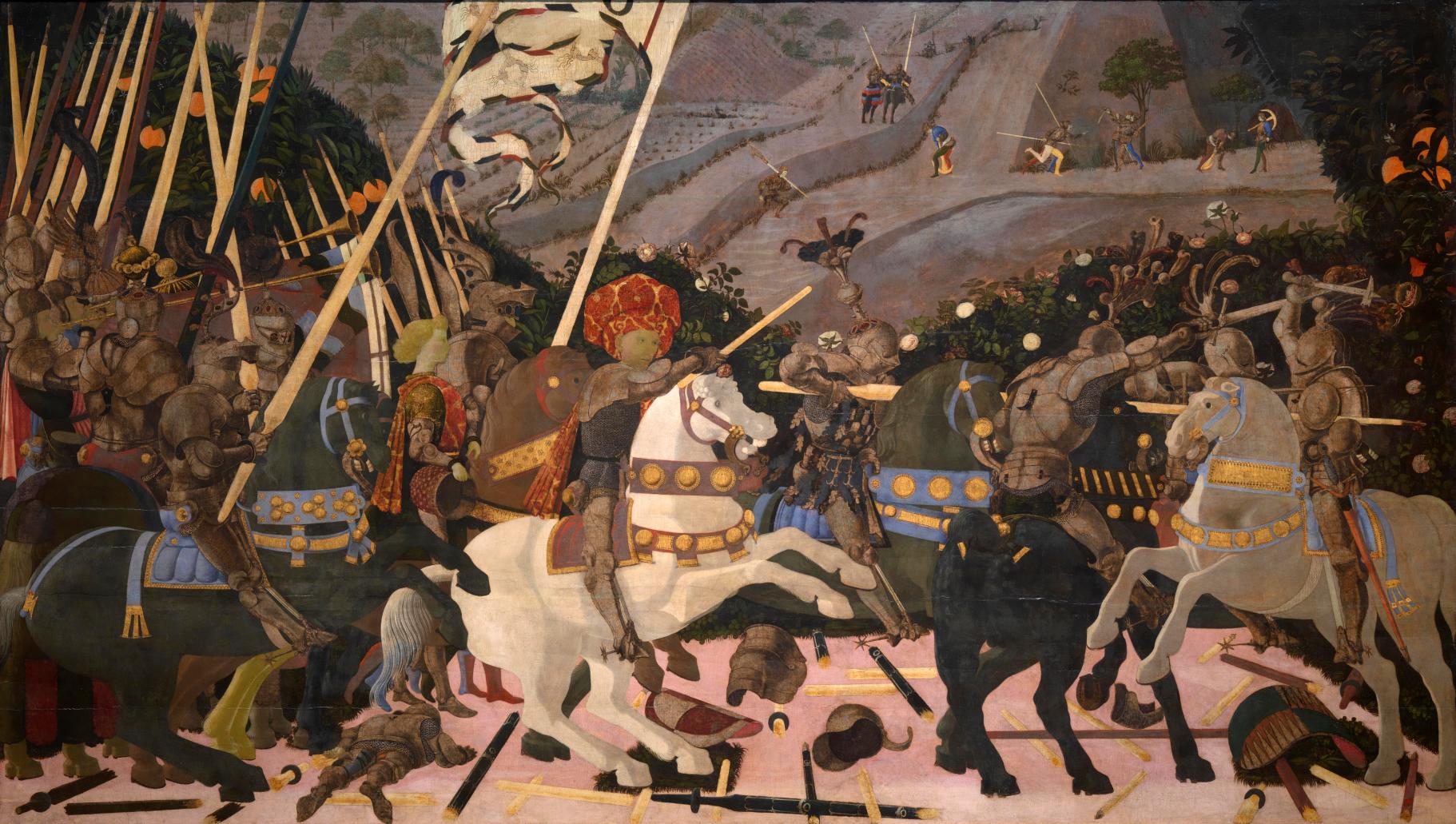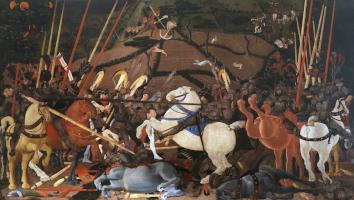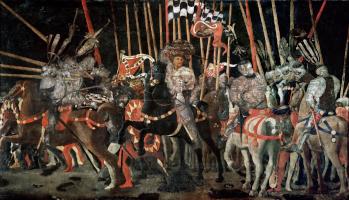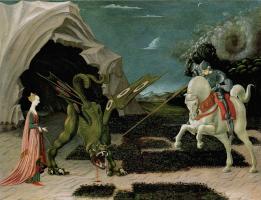Paolo Uccello
Paolo Uccello was born in Florence, where he trained in the workshop of the sculptor and goldsmith Ghiberti, and entered the Painters’ Guild. He worked in a variety of media: on wood panels, on canvas, and even in mosaic; he designed stained glass windows for the cathedral in Florence, and produced a famous wall painting of an equestrian figure, Sir John Hawkwood, an English soldier who served the Italians with conspicuous success.
In his strange, highly individual and lively paintings, one of the most notable features is his interest in foreshortening and perspective. The effects that could be achieved with them were a constant source of fascination to him. His colours were not true to life but were used to create a decorative design; and his paintings were filled with charming and delicate detail made up of patterns of lines and spirals.
Uccello had another powerful gift — he could tell a story — and the Rout of San Romano, a battle in which Florence was victorious over Siena in 1432, provided an ideal subject. It was commissioned by the great Medici family for their new palace in Florence, and Uccello painted three episodes from the event. They would have been hung as a continuous frieze, providing gorgeous propaganda for Florentine courage and success.
 The hero of the battle was the Florentine warrior Niccolo da Tolentino, who
recklessly pursued the Sienese and held them until reinforcements arrived to
save the day. Here he can be seen on a powerful white charger in the centre of
the action. He is in fact directing operations rather than actually fighting;
his face is exposed, and in his magnificent hat and elegant short cloak, more
like ceremonial than battle dress, he makes an impressive sight. His young page
rides behind him carrying his helmet, and another soldier holds a banner
bearing his heraldic device.
The hero of the battle was the Florentine warrior Niccolo da Tolentino, who
recklessly pursued the Sienese and held them until reinforcements arrived to
save the day. Here he can be seen on a powerful white charger in the centre of
the action. He is in fact directing operations rather than actually fighting;
his face is exposed, and in his magnificent hat and elegant short cloak, more
like ceremonial than battle dress, he makes an impressive sight. His young page
rides behind him carrying his helmet, and another soldier holds a banner
bearing his heraldic device.
The composition is divided into two sections: the colourful and dramatic foreground, with its convincing portrayal of figures in action (including the fore-shortened knight prostrate on the ground); and the steeply sloping hill behind, which is little more than a decorative backdrop where Uccello could indulge to the full his love of perspective. The division is emphasized by the orange trees at either side and the hedge of wild roses in full bloom, which indicate the luxuriance of the surrounding landscape. The diagonal lances, the rearing horses in their fine coloured bridles, and the helmets and lances scattered on the ground, all increase the impact of this vigorous and captivating scene.
Uccello provided not only a highly decorative and interesting painting for his aristocratic clients but one that was designed to stir the blood with patriotic pride.
 Uccello tells the story of St. George in true gothic style. The valiant
knight’s deadly lance lines up with a storm cloud behind him, which could
signify divine intervention. At the same time, it projects forward into the
picture plane helping establish a three dimensional space around which the
elegant damsel — no longer distressed — prepares to lead the
conquered dragon, like a pet dog.
Uccello tells the story of St. George in true gothic style. The valiant
knight’s deadly lance lines up with a storm cloud behind him, which could
signify divine intervention. At the same time, it projects forward into the
picture plane helping establish a three dimensional space around which the
elegant damsel — no longer distressed — prepares to lead the
conquered dragon, like a pet dog.




